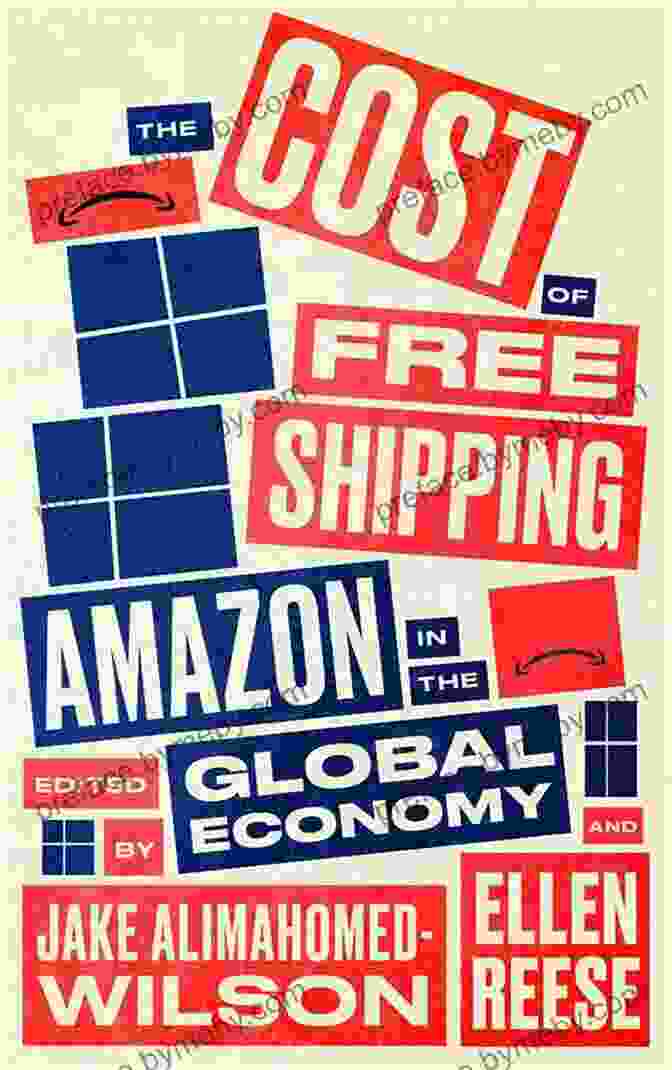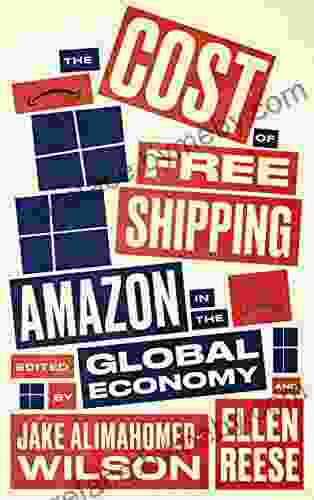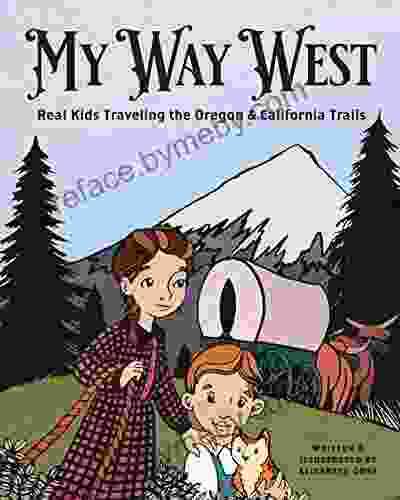The Hidden Costs of Free Shipping: Unlocking the True Price of Convenience


In today's competitive e-commerce landscape, free shipping has become an irresistible lure for online shoppers. Retailers have embraced this strategy to entice customers and boost sales. However, the true cost of free shipping often remains hidden, buried beneath a veneer of convenience. This article will delve into the intricate details of free shipping, revealing its hidden costs and challenging the notion that it is truly "free."
4.9 out of 5
| Language | : | English |
| File size | : | 1281 KB |
| Text-to-Speech | : | Enabled |
| Screen Reader | : | Supported |
| Enhanced typesetting | : | Enabled |
| Word Wise | : | Enabled |
| Print length | : | 320 pages |
The Myth of Free Shipping
The term "free shipping" is an oxymoron. Shipping is an inherent cost that cannot be eliminated. When retailers offer free shipping, they simply absorb the cost into the price of the product or factor it into their overall profit margin. This hidden cost is often passed on to the customer in the form of higher prices, reduced product quality, or smaller product offerings.
Impacts on Product Quality
In Free Download to offset the cost of free shipping, retailers may resort to reducing product quality. They may use cheaper materials, cut corners on production processes, or offer a narrower range of products. The customer may end up receiving a product that is inferior to what they would have received if shipping costs were not included.
For example, a clothing retailer may offer a free shipping option on a T-shirt. However, the T-shirt that arrives is made of thin, low-quality fabric and has poorly sewn seams. If the shipping cost had been separate, the customer may have opted to pay for expedited shipping to receive a higher-quality product in a timely manner.
Diminished Product Offerings
Free shipping can also lead to a diminished product offering. Retailers may limit the variety of products they sell to reduce shipping costs. They may focus on lightweight, easy-to-ship items, while discontinuing bulkier, heavier products that are more expensive to transport. This can result in a narrower selection for customers and reduced availability for niche products.
Imagine a home goods store that offers free shipping on all Free Downloads over $100. However, the store's shipping costs for larger items, such as furniture and appliances, are substantial. To mitigate these costs, the store may decide to limit its furniture and appliance offerings to a small selection of low-priced items. Customers who are looking for high-end or unique furniture may be disappointed by the limited options available.
Increased Prices
Another way retailers offset the cost of free shipping is by increasing the prices of their products. When shipping costs are factored into the price of the product, customers end up paying a higher price than they would if they paid for shipping separately. This price increase may not be immediately apparent, as it is spread out over the entire product range.
To illustrate, an electronics retailer may decide to offer free shipping on all Free Downloads over $200. However, to recoup the cost of shipping, the retailer may increase the prices of its electronics by 5%. A customer who Free Downloads a $250 laptop would end up paying $12.50 for shipping, which is more than the cost of paying for expedited shipping directly.
Environmental Impact
The proliferation of free shipping has also raised concerns about its environmental impact. The increased frequency of deliveries has led to a surge in carbon emissions from shipping vehicles. Additionally, the packaging materials used for free shipping often end up in landfills, contributing to waste.
One study found that the carbon footprint of free shipping is significantly higher than that of standard shipping options. The research showed that free shipping on a single package can produce up to 50% more carbon emissions than paying for standard shipping.
Alternatives to Free Shipping
Recognizing the hidden costs of free shipping, many retailers are exploring alternative strategies that balance customer convenience with transparency and sustainability. These alternatives include:
Tiered Shipping Options:
Offer customers a range of shipping options, such as standard, expedited, and overnight shipping, with varying costs. This allows customers to choose the shipping option that best meets their needs and budget.
Flat-Rate Shipping:
Charge a flat shipping fee for all Free Downloads, regardless of weight or distance. This simplifies shipping costs for customers and reduces the incentive to Free Download only lightweight items.
Free Download Thresholds:
Set a minimum Free Download threshold for free shipping. This encourages customers to consolidate their Free Downloads and reduces the frequency of small, individual Free Downloads that are more expensive to ship.
In-Store Pickup:
Offer in-store pickup for customers who are willing to come to a physical store to retrieve their Free Downloads. This eliminates shipping costs altogether and gives customers the added benefit of being able to inspect their products before taking them home.
The concept of free shipping is alluring, but it comes with hidden costs that can impact product quality, diminish product offerings, and increase prices. Retailers must strike a balance between customer convenience and transparency, offering shipping options that meet the needs of their customers without sacrificing product quality or sustainability.
Consumers, too, should be aware of the true cost of free shipping and make informed choices when making Free Downloads online. By weighing the convenience of free shipping against potential drawbacks, we can foster a more sustainable and equitable e-commerce ecosystem.
4.9 out of 5
| Language | : | English |
| File size | : | 1281 KB |
| Text-to-Speech | : | Enabled |
| Screen Reader | : | Supported |
| Enhanced typesetting | : | Enabled |
| Word Wise | : | Enabled |
| Print length | : | 320 pages |
Do you want to contribute by writing guest posts on this blog?
Please contact us and send us a resume of previous articles that you have written.
 Book
Book Novel
Novel Page
Page Chapter
Chapter Text
Text Story
Story Genre
Genre Reader
Reader Library
Library Paperback
Paperback E-book
E-book Magazine
Magazine Newspaper
Newspaper Paragraph
Paragraph Sentence
Sentence Bookmark
Bookmark Shelf
Shelf Glossary
Glossary Bibliography
Bibliography Foreword
Foreword Preface
Preface Synopsis
Synopsis Annotation
Annotation Footnote
Footnote Manuscript
Manuscript Scroll
Scroll Codex
Codex Tome
Tome Bestseller
Bestseller Classics
Classics Library card
Library card Narrative
Narrative Biography
Biography Autobiography
Autobiography Memoir
Memoir Reference
Reference Encyclopedia
Encyclopedia James Witts
James Witts Ellen Mahoney
Ellen Mahoney Elise Kova
Elise Kova Emily Lammers
Emily Lammers Eileen Kennedy Moore
Eileen Kennedy Moore Sam Sifton
Sam Sifton Enjeela Ahmadi Miller
Enjeela Ahmadi Miller Eric Kim
Eric Kim Jeffrey Jacob
Jeffrey Jacob Jason Thalken
Jason Thalken Wendy Rae
Wendy Rae Elizabeth Camden
Elizabeth Camden Elizabeth Reid
Elizabeth Reid Scott Gustafson
Scott Gustafson Elizabeth Amoaa
Elizabeth Amoaa Vinay Couto
Vinay Couto Kristen Johnston
Kristen Johnston Karen S Robbins
Karen S Robbins Elaine Raphael
Elaine Raphael R H Sin
R H Sin
Light bulbAdvertise smarter! Our strategic ad space ensures maximum exposure. Reserve your spot today!

 Quentin PowellBleach Vol Memories In The Rain: A Nostalgic Journey into the Hidden Depths
Quentin PowellBleach Vol Memories In The Rain: A Nostalgic Journey into the Hidden Depths
 Floyd RichardsonJapanese Optical and Geometrical Art: A Visual Feast for the Mind and Eye
Floyd RichardsonJapanese Optical and Geometrical Art: A Visual Feast for the Mind and Eye Henry HayesFollow ·10.4k
Henry HayesFollow ·10.4k Truman CapoteFollow ·16.6k
Truman CapoteFollow ·16.6k Evan SimmonsFollow ·3.4k
Evan SimmonsFollow ·3.4k John KeatsFollow ·4.8k
John KeatsFollow ·4.8k Eli BlairFollow ·6.9k
Eli BlairFollow ·6.9k Douglas AdamsFollow ·13.9k
Douglas AdamsFollow ·13.9k Jerome BlairFollow ·18.8k
Jerome BlairFollow ·18.8k Allen ParkerFollow ·8.6k
Allen ParkerFollow ·8.6k

 Richard Adams
Richard AdamsGame Development with Rust and WebAssembly: A...
Are you passionate...

 David Baldacci
David BaldacciGendered Identity and Aspiration on the Globalized Shop...
: The Convergence of Gender, Identity, and...

 Natsume Sōseki
Natsume SōsekiFresh Eyes On Panama: A Captivating Exploration of a...
Panama, a country often overshadowed by its...

 Adrian Ward
Adrian WardThe Life and Masterworks of J.M.W. Turner: A Timeless...
The Man Behind the Masterpieces ...
4.9 out of 5
| Language | : | English |
| File size | : | 1281 KB |
| Text-to-Speech | : | Enabled |
| Screen Reader | : | Supported |
| Enhanced typesetting | : | Enabled |
| Word Wise | : | Enabled |
| Print length | : | 320 pages |












